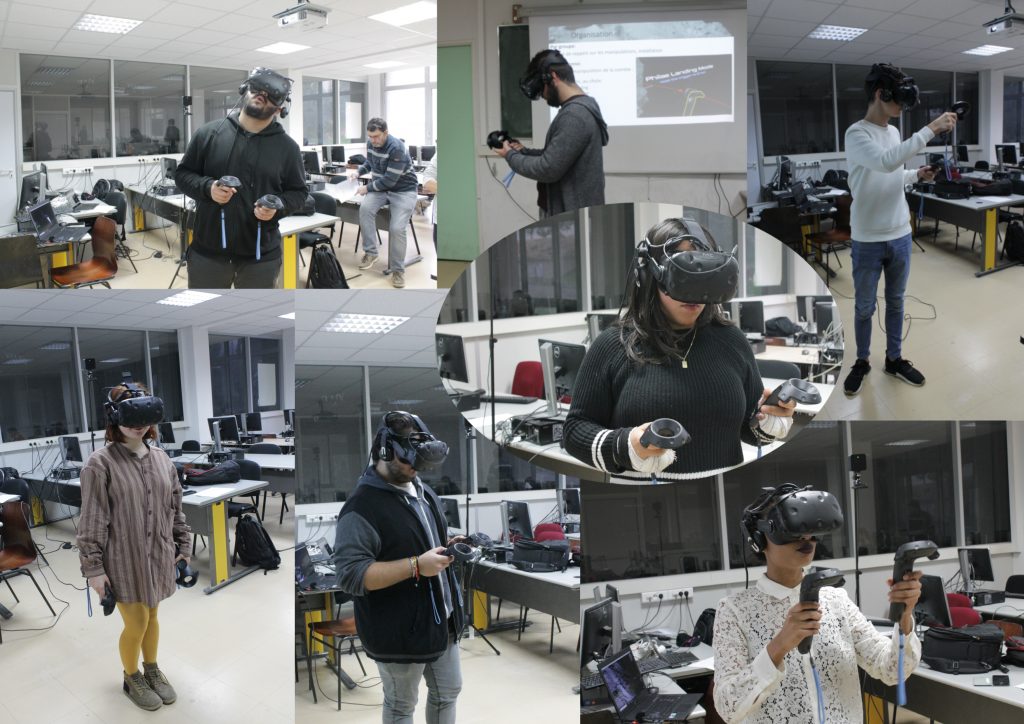December, the 18th 2018: 14 students of AMNS tested the VR2Chury software during their training courses. Below some pictures of their experience!
It was a great experience for them! Below, their comments and feedbacks!
In French and translated in English:
“C’est impressionnant et ça porte bien son nom de réalité virtuelle, on s’y croirait vraiment ! ”
“It is very impressive and it is aptly named Virtual Reality: we really believe we are there!”
“J’ai trouvé ça super malgré quelques vertiges, merci beaucoup !”
“I found that great despite some vertigo, many thanks!”
“C’est un outil capable d’une grande immersion. On en ressort avec un émerveillement beaucoup plus grand qu’une description dans un manuel “
“It is a tool able of a deeper immersion. You come out with a wonder much greater than using a book.”
“Expérience intéressante”
“Interesting experience”
“J’ai trouvé que c’était intéressant et plus simple pour comprendre les choses“
“I found that it was interesting and more simple for understanding things”.
“C’est très plaisant à utiliser, la qualité est plutôt pas mal mais reste tout de même à améliorer“
“It is very pleasant to use, the quality is not bad but needs to be still improved“
“C’était une expérience super intéressante ! “
« It was a very interesting experience!”
“Très réaliste, on a vraiment l’impression d’être sur la comète ! “
“Very realistic, you really believe that you are on the comet!”
“Une expérience excellente qui permet de voir en grandeur nature différents objets“
“An excellent experience that allows you to see different objects in natural sizes”
“Expérience intéressante permettant de découvrir la comète d’un point de vue totalement différent et c’est fascinant ! “
“Interesting experience allowing you to discover the comet with a totally different point of view and it is fascinating”
“Vraiment très intéressant pour découvrir l’univers grâce à un outil révolutionnaire comme la VR“
“Really highly interesting for discovering the universe thanks to a revolutionary tool as the VR is”.
